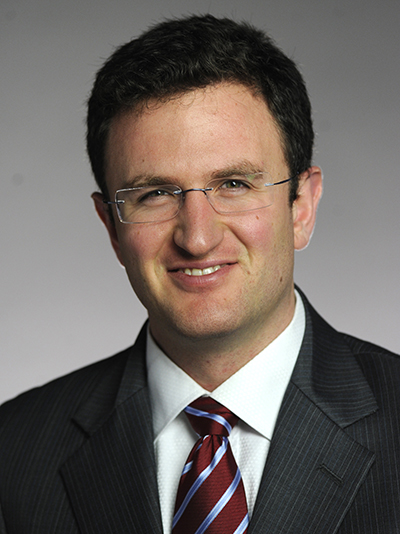Early Retirement Issues Confront Mahoning Valley Employers
YOUNGSTOWN, Ohio – After the pandemic hit in early 2020, two employees of City Machine Technologies in Youngstown who had reached age 65 decided to move up their retirements by a few months, says Claudia Kovach, CMT corporate secretary.
That isn’t a trend, she says. Two more workers are scheduled to retire at the end of this year but those retirements weren’t accelerated.
Even as economic and industry observers cite anecdotal evidence of the much-publicized wave of early retirements, representatives of local employers and trades say they aren’t seeing evidence of the trend.
Retirements had been on the rise before the pandemic as baby boomers began reaching retirement age. That trend accelerated during the COVID-19 pandemic, says Bill Adams, senior economist with PNC Financial Services Group. About one million more Americans are retired now than would have been if retirement rates before the pandemic held.
“We have definitely heard anecdotes of that happening,” beginning at the height of the pandemic, says Jessica Borza, executive director of the Mahoning Valley Manufacturers Coalition.
From hotels and restaurants to factories, talent is the top issue for employers, says Guy Coviello, president and CEO of the Youngstown/Warren Regional Chamber. Although workforce shortages are not exclusively tied to early retirements, those are “obviously a factor,” he says.

Baby boomer retirements doubled those of previous years and the workforce hasn’t repopulated enough to compensate. “One of the things that’s really driving this is the increase in personal wealth in the past year and a half,” Coviello says.
“Pre-pandemic, we had been seeing labor force participation actually rising for older workers [as they remained healthier longer],” Adams says.
Why so many more people retired is “a complicated question,” he says. “It’s a mix.”
COVID-19 concerns led some workers to retire early, while others who were infected had lingering effects and were pushed into early retirement or disability. Substantial gains in home values and the stock markets made early retirement more feasible, Adams says.
Judging how much the early retirement phenomenon might affect the local metropolitan statistical area is difficult because there isn’t much observable data, says A.J. Sumell, economics professor at Youngstown State University. Retirements could be higher locally than in other areas because of the greater proportion of older workers closer to retirement age.
“It’s a national trend that has been well documented,” Sumell says. “We just don’t know quantitatively how much it’s happening in the local economy.”
Local workforce challenges aren’t specifically tied to early retirements but more broadly to the issues employers have finding workers for available positions, Sumell says.
“There is a well known labor shortage around the nation and that’s also true here, particularly for the types of firms that exist here, which means for lower paying jobs the shortage is even higher,” he says. Manufacturers in particular are struggling to find workers.
Meeting local workforce needs was an issue even before the pandemic because of population declines, aging of the existing workforce and challenges to find replacements for those departing workers, says Mary Ann Kochalko, director of the Workforce Development Board of Mahoning and Columbiana Counties.
“What we’re seeing is anecdotal because there’s no data,” she says.
Kochalko says she reads news articles published within days of each other that appear to conflict. She notes many individuals leaving the workforce aren’t necessarily reported as retirements. And much of the data doesn’t break down to the local area until it is too late to be meaningful.
Some people with whom she has spoken are leaving the workforce early because of health concerns, Kochalko says. Even if they haven’t saved all the money they planned, they feel they have enough and are making different work-life choices.
“And there are people who have valid reasons for leaving their jobs early because they were too risky,” Kochalko says, or needed to help take care of children when they lost their caregivers.
Many people who had planned to work another five years “absolutely” are deciding to retire now, even if they have less money than they had planned, says Bill Padisak, president of the Mahoning-Trumbull AFL-CIO Labor Council.
Padisak, who mainly works with school employees, sees people retiring and school districts having problems replacing them. Although he could not attribute that to COVID-19 or the labor market, the pandemic has changed attitudes about work, he says.
Previously, people wanted to work longer to build up Social Security or other retirement benefits. But teachers, for instance, are concerned about potential changes to their benefit plans so they retire earlier to lock in benefits.
Early retirements are particularly hitting industries that have an older workforce, such as manufacturing, intensifying labor shortages in that sector, Adams, the PNC economist, says. A “big reason” labor scarcity is an issue for the hospitality industry is that older workers aren’t coming back to part-time jobs they would have taken before the pandemic, or at least not returning in the same numbers.
Like CMT’s Kovach, representatives of other local employers contacted, including Mercy Health Youngstown and Dearing Compressor & Pump Co. in Boardman, say they are not experiencing a wave of early retirements. Neither is the Educational Service Center of Eastern Ohio.
The Public Library of Youngstown & Mahoning County, which has 180 employees total and 140 full-time equivalents in the 15 branches it operates, had eight retirements this year, just one more than the seven who retired in 2019, says Maggie Henderson, strategic communications officer. Last year 15 employees took advantage of a voluntary retirement incentive the system offered.
“We’re also a local employer with many employees who spend most of, if not all of, their careers with us,” Henderson says.
One recent retiree had worked for the public library 42 years “so it’s not exactly what I would call an early retirement but a well-deserved retirement.” Her own predecessor, who also retired this year, was with the system 30 years.
“These types of tenures are not uncommon for us. We feel fortunate that we have so many dedicated employees who have dedicated their careers to the library and to public service,” Henderson says.
Padisak doesn’t think the early retirement trend has affected the building trades. With work bolstered by construction projects funded through federal pandemic relief money, many workers are deciding to work as long as they can because the work is steady.
Marty Loney, business manager of Plumbers and Pipefitters Local 396, and Tony DiTomasso, president of Carpenters Local 171, say they aren’t seeing increases in the rate of retirements among their members
“We’ve been pretty steady as far as the numbers of people retiring,” DiTomasso reports. Many are staying on as a result of recent changes that allow them to earn more money.
The Carpenters local lost several members in 2008 and 2009 over pension plan changes but there hasn’t been a rush to retire early recently, DiTomasso says. Early retirements usually occur because of health issues or lifestyle changes such as a spouse’s retirement.
“With the amount of work we have, guys are looking at building their pension,” he says.
Keith Downard, branch manager at the Stifel office in Canfield, says he isn’t seeing a rush to retire early. Some clients have discussed it but haven’t pulled the trigger. They like what is happening with their accounts and aren’t ready to say what they’re going to live on for the rest of their lives.
“There’s a lot out there who are still very cautious,” Downard says.
While it is unknown how many workers are retiring early, Sumell, the YSU economist, points to a significant increase in the number of employed workers over the past year, particularly the past five months, bringing the local unemployment rate to below a projected 5% for the first time in three years.
Adams attributes the inflation rate – the highest in decades – to the nation’s productive capacity, which has been recovering more slowly than people’s willingness to spend, in part because of workforce issues.
“One of the big keys in unlocking the productive capacity of the U.S. economy is getting older workers back into the workforce, or getting older workers who want to be working back into positions,” Adams says. “Rising labor force participation by older workers can be one of the big drivers of economic growth in 2022” if health concerns keeping older workers out of the labor force become less of an issue.
Pictured at top: A.J. Sumell is an economics professor at Youngstown State University.
Copyright 2024 The Business Journal, Youngstown, Ohio.


